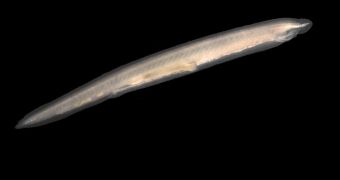Scientists at the University of Dundee and the University of St. Andrews say that the origins of several human diseases can be traced back to an evolutionary leap that occurred in our ancestors, some 500 million years ago.
The ancestor in question was most likely a marine invertebrate that lived at the bottom of the ocean. Experts widely agree that these creatures were the starting point for the process that eventually led to the appearance of vertebrate animals.
At that time, a massive evolutionary upheaval occurred, which saw the amount of DNA in these invertebrates double in size, and then double again. These significant changes set the stage for the emergence of vertebrates such as fish, birds, reptiles, and mammals, including our own species.
At the same time, these important modifications may have created the environment necessary for the development of severe human diseases, including diabetes, cancer and neurological disorders.
Details of the new investigation will be published in an upcoming issue of the Royal Society journal Open Biology. One of the main benefits of the two-stage DNA quadrupling is that the cells of vertebrates are now extremely effective at integrating information.
“Amazingly, what happened so long ago still affects the life and diseases of modern humans,” UC College of Life Sciences professor Carol MacKintosh explains. The researcher was a member of the team that conducted the new study.
The breakthrough came with the recent decoding of the genetic sequence in the invertebrate amphioxus, which is currently thought to be a very distant relative to humans.
“The ancestors of amphioxus did not go through the two rounds of genome duplication, so it is still quite similar to the original spineless creature,” MacKintosh says.
“You can still see the 'family resemblance' between amphioxus and humans, because like us, it has a nerve cord running down its back, blocks of muscle, and branchial arches where we have facial structures,” the investigators has. What they don't have is a brain, or a face, a heart or bones.
By studying the genetic differences between vertebrates and these creatures, experts hope to gain even more insight into how the human genome promotes the development of severe diseases.

 14 DAY TRIAL //
14 DAY TRIAL //